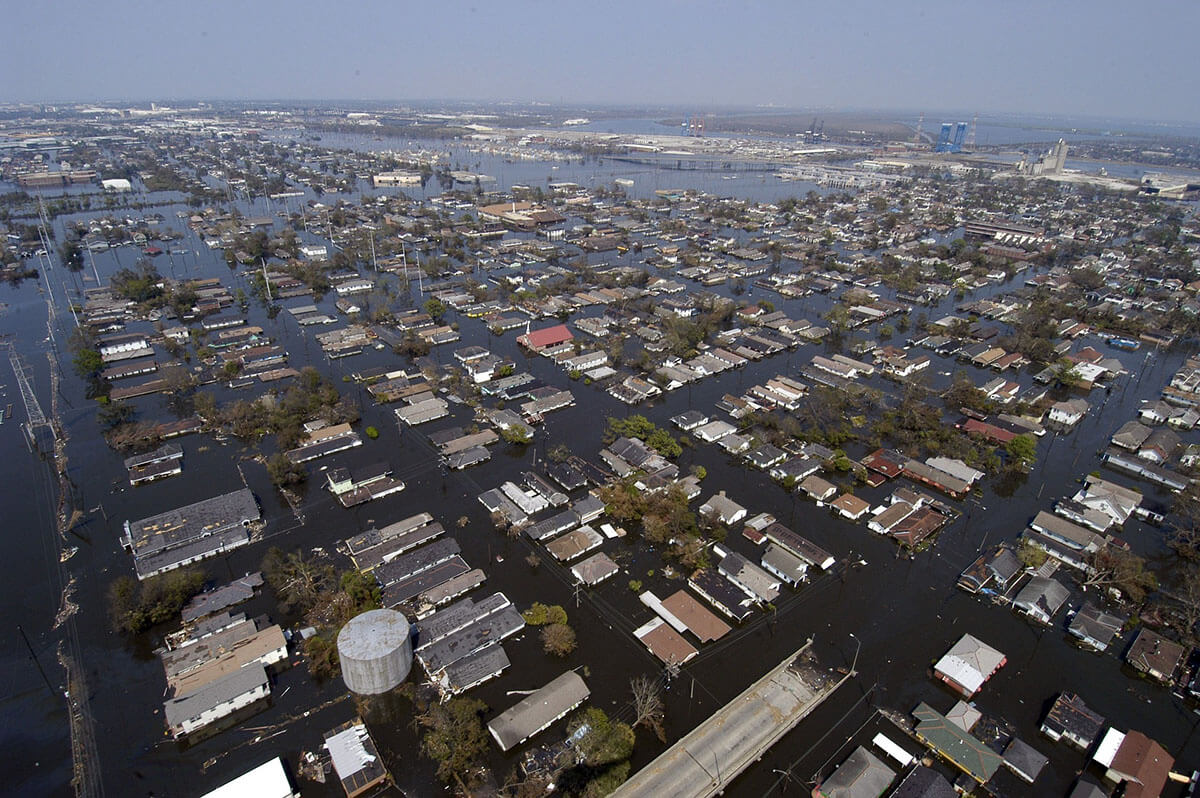We all have an idea of what a hurricane looks like, but did you know that it’s actually not just one type of storm? In this article, we’ll explain what exactly a hurricane is, different types of hurricanes that exist, and how they form. We’ll also discuss the myths and realities surrounding hurricanes to help you be more prepared if you live in an area that’s at risk for tropical storms or hurricanes.
A Guide on How Hurricanes Are Formed
A hurricane is a type of tropical cyclone that forms in the Atlantic or Pacific Oceans. The name hurricane is believed to come from Huracan, one of the Maya gods of storms. Hurricanes are fueled by heat and moisture from warm ocean waters. They form when air currents near Earth’s surface pick up heat and rise quickly, then cool and sink below warmer air near Earth’s surface. The patterns that develop from this, along with other factors such as cold fronts and wind shear, give birth to these powerful storms.
A hurricane starts out as a small storm system, but it can grow stronger over time. They typically have winds exceeding 74 mph (119 km/h), which makes them more dangerous than many other types of storms like thunderstorms and tornadoes. There are two main classifications of hurricanes: they’re either Cat 1 or Cat 5. Cat 1 hurricanes usually have winds that range between 74-95 mph (119-153 km/h) while cat 5 hurricanes usually have winds ranging between 111-179 mph (178-288 km/h).
There are three levels for intensity within each category: minimal, major, and catastrophic. Typically, Cat 1 hurricanes cause flooding and structural damage, while Cat 2 hurricanes cause roof damage and flooding. Only once has there been a cat 3 hurricane – Hurricane Mitch in 1998 killed around 11,000 people across Central America. A Cat 4 causes serious coastal erosion and flooding due to large waves crashing onshore; unfortunately no previous examples exist of such an event. And finally, a CAT 5 Hurricane packs devastating winds of 157 mph or higher – it’s rare that anything will survive this category.
Why They Happen
Hurricanes are considered tropical cyclones, which is an organized system of powerful winds that form in large areas of warm water. Hurricanes typically form in the summer and fall months, when sea surface temperatures are at their highest. A hurricane’s strength is determined by its wind speed and storm surge; however, these can change quickly due to land interaction or eyewall replacement. The deadliest natural disaster on record, hurricanes have killed over 20 million people and caused more than $2 trillion dollars in damage.
Hurricanes pose a great threat to coastal regions since they’re capable of generating up to eight meters (25 feet) of storm surge. Countries in hurricane-prone zones like the United States are able to prepare for this extreme event through warning systems and evacuation routes, but even so it can be difficult for some populations—such as those living in poverty or without access to transportation—to evacuate from danger zones. In response, there has been much research on how best to handle such emergencies. Early evacuation before the landfall of a major storm has been found most effective for saving lives; evacuation during the hurricane may save some lives but would often result in catastrophic consequences if it occurs too late.
Who Can Be Affected by Hurricanes
Hurricanes are natural disasters that can be experienced in many countries. They usually affect coastal areas, where there is typically low-lying land and lots of trees. Hurricanes have been known to kill people, destroy property, and cause massive power outages. The flooding caused by hurricanes can also lead to shortages in food and clean water supplies for residents.
It’s important for everyone living in an area affected by hurricanes to get prepared ahead of time. Prepare emergency kits with items like food, water, flashlights, batteries, a first aid kit, medications, clothing and pet supplies for your family members or neighbors who need them before storms hit. Make plans for what you will do during the storm – like if you’ll shelter at home or evacuate if necessary. Create evacuation routes from your home and know which buildings will be open as shelters in case of severe weather. Visit Ready America to find tips on how to prepare for and survive a hurricane!
The Damage Done by a Hurricane
Hurricanes are natural disasters that form when warm ocean water and atmospheric moisture interact with cooler air. Hurricanes typically form in areas where the sea surface is at least 80 degrees Fahrenheit and wind speeds exceed 74 miles per hour. When hurricanes form, they produce thunderstorms, tornadoes, and downpours that can cause flooding and other severe damage to homes and businesses. The cost of repairing this damage depends on how much rainfall and winds there were during the hurricane, as well as how long it lasted.
Some locations may be uninhabitable for weeks or months following a hurricane because of storm surge, power outages, and lack of access to resources such as food or clean water. Damage may also be incurred by exposure to dangerous chemicals released from toxic waste sites following a storm surge. Some people are unable to repair the damages from these storms because they lack resources such as financial savings or supplies like lumber and tarps. The main focus of relief organizations should be helping those who have been impacted and not just focusing on restoring electricity, telephones, potable water sources, shelter, food and medical care.
Even if a storm does not hit an area directly but does affect their weather system it can still cause damages for example rainstorms which flood their towns and cities causing heavy floods which can carry hazardous materials. A hurricane has the potential to destroy buildings, trees, and electrical infrastructure while leaving roads impassible due to debris. After a hurricane passes through many people do not have any way of rebuilding their home without help. Without sufficient resources many homeless families will end up living in tents and makeshift shelters without access to running water or sanitation services.
Dealing With the Aftermath
The aftermath of a hurricane includes destruction of property, erosion of beaches and coastline, and large-scale power outages. If you live in an area that’s been hit by a hurricane, it is important to follow all instructions from your local authorities to avoid injury or death due to cleanup efforts. You can also donate blood if you have O+ blood type. Cleaning up after a hurricane may take months. Recovery work needs people to help with the clean-up effort. To make sure you’re safe when helping with clean-up, wear protective gear including goggles, gloves, and boots.
Most of what makes up a hurricane are heavy rainstorms that cause severe flooding. It is important to be prepared for flooding before hurricanes come so your home will not suffer damage during this time.
You should also be prepared for power outages because most hurricanes cause widespread power outages.
For more information, including current Hurricane conditions, follow the National Hurricane Center.










